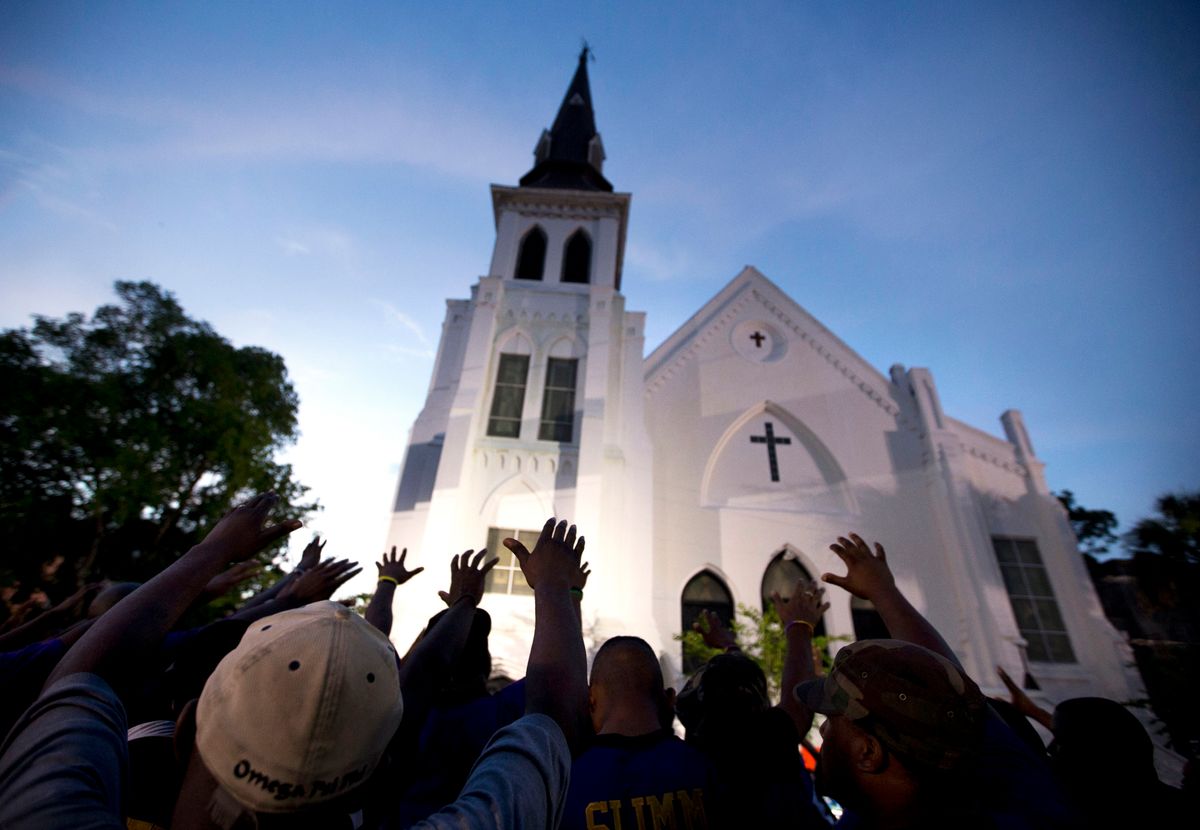The United States Supreme Court recently heard oral arguments in a case from Missouri that could have a significant impact on state funding of religious schools.
The case involved a church in Missouri, the Trinity Lutheran Church, that had applied for state grants to purchase recycled tire material to refurbish its playground. The state declined the request due to a state constitutional provision that forbids funding for religious institutions, including schools.
The case raises some important questions. A particularly important one is whether denying state funding to religious schools under a program generally open to nonreligious schools is unconstitutional.
As a legal scholar, a related issue that interests me is why so many state constitutions have provisions preventing funding for religious schools?
Conflicting history
A number of state constitutions have clauses restricting state funding for religious schools, or for private schools generally. The language and history of these clauses vary widely.
The United States Supreme Court has suggested that some of these clauses may be invalid if they are based in anti-Catholic prejudice, which was pervasive in the United States from the founding of the nation through the middle of the 20th century. Indeed, some historians and others have made strong arguments that these clauses were based in anti-Catholic bigotry.
These state clauses also raise concerns over whether they violate the Free Exercise Clause and the Equal Protection Clause of the United States Constitution, which prohibit laws that discriminate against any religion. A state constitutional provision that violates the United States Constitution would itself be unconstitutional.
Of course, just because some of these clauses may be based in part on anti-Catholic prejudice does not mean that all of these clauses reflect anti-Catholic bigotry. In fact, other legal historians have made strong arguments that many state constitutional provisions were based on concerns other than anti-Catholic prejudice, such as promoting a strong system of public education, especially after emancipation.
The Blaine Amendment
Some state constitutional provisions denying taxpayer funding to religious schools are referred to as “baby-Blaines.”
So, what are baby-Blaines?
The term refers to state constitutional provisions modeled on an amendment to the United States Constitution that was proposed in 1875 by Senator James G. Blaine, but was never adopted. That proposed amendment would have, among other things, prevented state governments from spending money to fund religious schools.
Senator Blaine was a powerful Republican senator from Maine. He also served as secretary of state and was the Republican nominee for president in 1884, but was narrowly defeated by Grover Cleveland.
While Senator Blaine’s motivation in proposing the amendment is complex, scholars have shown that many supporters of that proposed amendment demonstrated strong anti-Catholic bias. The amendment itself arose during an era of extreme anti-Catholic bias in the United States.
By 1875 a number of states were engaged in significant debates over funding Catholic parochial schools. Yet, in other states the focus was primarily on promoting a strong system of public education for all citizens after the Civil War and emancipation. In fact, President Ulysses S. Grant, a supporter of a strong system of public education, made a famous speech in 1875 promoting public education which may have helped spur Blaine’s proposed Amendment.
A state funding provision based in anti-Catholic prejudice – such as a baby-Blaine – could be unconstitutional today. Yet, a similar provision that is not driven by anti-Catholic prejudice could well be constitutional.
In 2004, for example, the Supreme Court upheld application of a Washington state constitutional provision that limits funding to religious education, but does not share the anti-Catholic prejudice of baby-Blaines. The constitutional provision in that case is similar to the one at issue in the Trinity Lutheran case.
However, the state of Washington was sued only for denying funding to those studying to become a minister or other clergy member. At the heart of the Trinity Lutheran case is the issue of whether the state can deny funding for things other than studying to become a minister. The history of the Missouri Constitution’s provision denying funding to religious schools is relevant to this question.
The Missouri Constitution
So, it becomes important to know which state provisions emerged from anti-Catholic prejudice. More specifically, is Article 1, Section 7 of the Missouri Constitution – the clause at issue in the Trinity Lutheran case – based in anti-Catholic prejudice? In other words, is it a baby-Blaine?
I am a signatory on an amicus brief in this case. I believe it is not a baby-Blaine. And here is why.
Article I, Section 7 of the Missouri Constitution does not closely track the language of the Blaine Amendment, and is in fact broader and more focused on a longstanding state concern about separation of church and state in Missouri.
Moreover, the legislative history of Article 1, Section 7 does not contain the somewhat pervasive anti-Catholic prejudice found in the legislative history of a number of baby-Blaines and the failed federal Blaine Amendment itself.
It is true that Article I, Section 7 of the Missouri Constitution was passed in 1875 – the same year the failed federal Blaine Amendment was introduced. This has spurred debate among legal scholars. The key, however, is not the year it was passed, but rather the dates on which it was debated. The Missouri provision was discussed by the Missouri Constitutional Convention months before Senator Blaine proposed the federal amendment. This adds some fuel to the argument that it is not a baby-Blaine.
On the other hand even if the particular provision of the Missouri Constitution is not a “baby-Blaine,” the other issues in the Trinity Lutheran case remain important.
Whatever may be the outcome of the Trinity Lutheran Church case, it is worth noting how an often overlooked period in history continues to have an impact on issues such as playground surfaces in the 21st century.



Shares